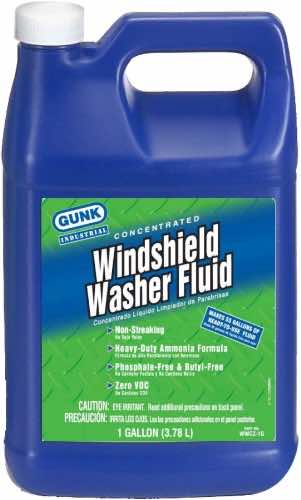

- I PUT WINDSHIELD FLUID IN COOLANT DRIVERS
- I PUT WINDSHIELD FLUID IN COOLANT FULL
- I PUT WINDSHIELD FLUID IN COOLANT CRACK
Some drivers assume they can put water in their washer fluid reservoir and be on their way, but doing so will only lead to problems.įirst, in the summertime, you’re missing out on the detergents that help wash away the dirt and grime. You can choose from a wide range of windshield washer fluids, but one option is 100% off the table: water.
I PUT WINDSHIELD FLUID IN COOLANT FULL
If you do a lot of highway driving and deal with a windshield full of bugs, you may want to consider switching to a bug wash in the summertime or adding some bug wash additive to increase its gut-cleaning properties. Not only do all-season washer fluids have freeze points as low as -45 degrees Celsius, but they also have a good balance of detergents to help keep your windshield clean and streak-free. Fortunately, most all-season washer fluids offer all the protection you need. This range of temperatures may lead you to believe you need to rotate your windshield washer fluid - just like replacing your summer tires with winter tires - when the temperature drops. However, in some areas across the country, the summers are mild and sunny, giving us dramatic shifts in high and low temperatures as the seasons change. Even in the warmest provinces, wintertime is frigid and snowy. In Canada, our winters are not for the faint-hearted. Windshield Washer Fluids in Canadian Winters They generally run $2-$3 at your local auto parts store for a 3.78-litre jug. These are some of the least expensive windshield washer fluids on the market. There’s a wide range of standard windshield washer fluid brands, some popular brands you can choose from include:
I PUT WINDSHIELD FLUID IN COOLANT CRACK
When the fluid freezes, it expands and can crack the windshield washer reservoir, damage the pump, or both, leading to pricey repairs. However, since it has little to no antifreeze chemicals, Canada's extreme winter temperatures can cause it to freeze. This fluid is generally a mixture of water, methanol, and other glass cleaners and chemicals.īecause of its high concentration of cleaning agents, standard windshield wiper fluid tends to clean more thoroughly, leaving you with a clear view and fewer streaks than household glass cleaners or just water. This is the basic, run-of-the-mill blue liquid you can pick up at any auto parts store, discount store, or pay-three-times-as-much-for-it-in-a-pinch gas station. When to Refill Your Windshield Washer Fluid

Find the windshield washer reservoir cap.That said, if the fluid gets low you can top it off using the following steps: Therefore, there’s no specified procedure for changing windshield washer fluid. Unlike motor oil and other fluids in your vehicle, windshield washer fluid doesn't break down and never needs changing. Which windshield washer fluid is right for you? We’ve got you covered below. When you head to the parts store, half an aisle is dedicated to just windshield washer fluid. It’s time to top off that windshield washer fluid. now your wipers just smudged all that filth across your windshield, leaving your vehicle’s windshield debris-streaked and difficult to see through. So, you hit the windshield washer button and nothing. Do not reenter the pool until the chlorine residual is between 1.0 and 3.0 ppm.You hop in your car, fire up the engine and notice a little dirt and grime. Check the level of available chlorine with a test kit. Every seven days, or as necessary, super-chlorinate the pool with 54 to 108 ounces of product for each 10,000 gallons of water to yield five to 10 ppm available chlorine by weight. Frequency of water treatment will depend on the temperature of the pool and number of swimmers.Ĭ. Monitor the pH, available chlorine residual, and alkalinity of the water frequently with appropriate test kits. Stabilized pools should maintain a residual of 1.0 to 1.5 ppm available chlorine. To maintain the pool, add 12 ounces of pool shock for each 10,000 gallons of water either manually or by a chemical feeder to yield an available chlorine residual between 0.6 and 1.0 ppm by weight. Adjust and maintain the alkalinity of the pool between 50 and 100 ppm.ī. Adjust and maintain pool water pH between 7.2 and 7.6. For a new pool or spring start-up, super-chlorinate with 54 to 108 ounces of product for each 10,000 gallons of water to yield five to 10 ppm available chlorine by weight. SPLASH® Pool Shock may be applied only by the methods specified on the labeling. Consult your manufacturer’s recommendations.


 0 kommentar(er)
0 kommentar(er)
